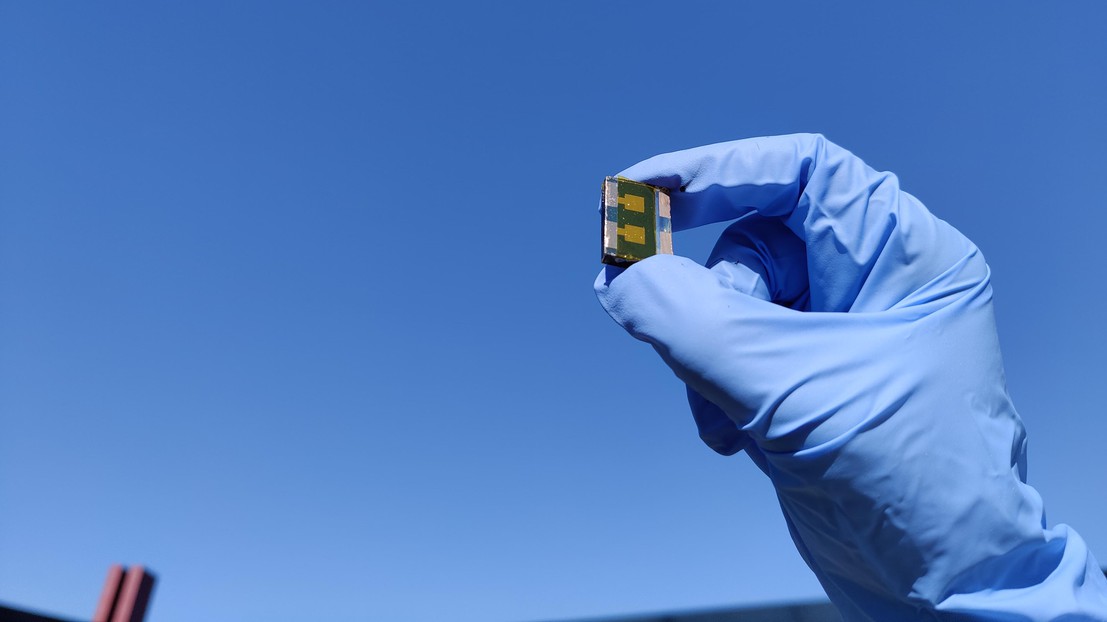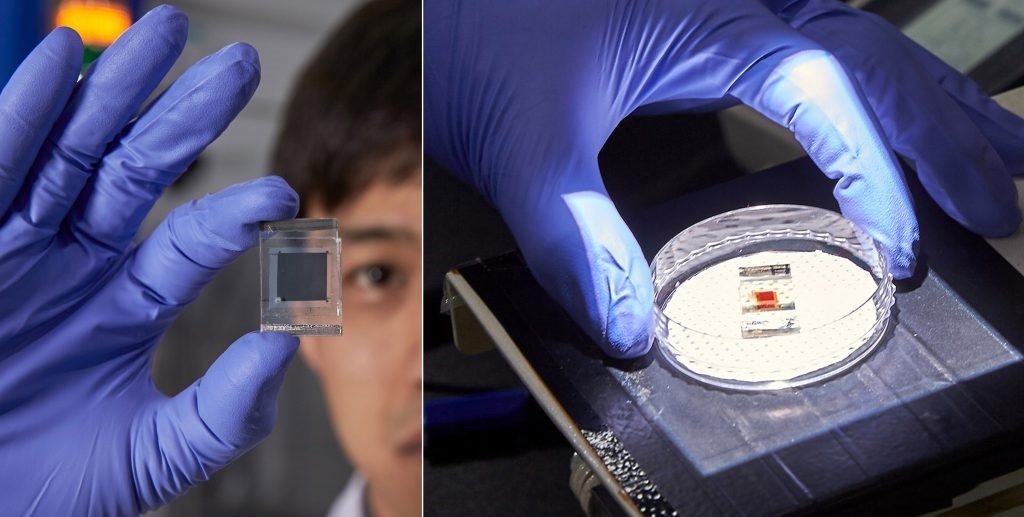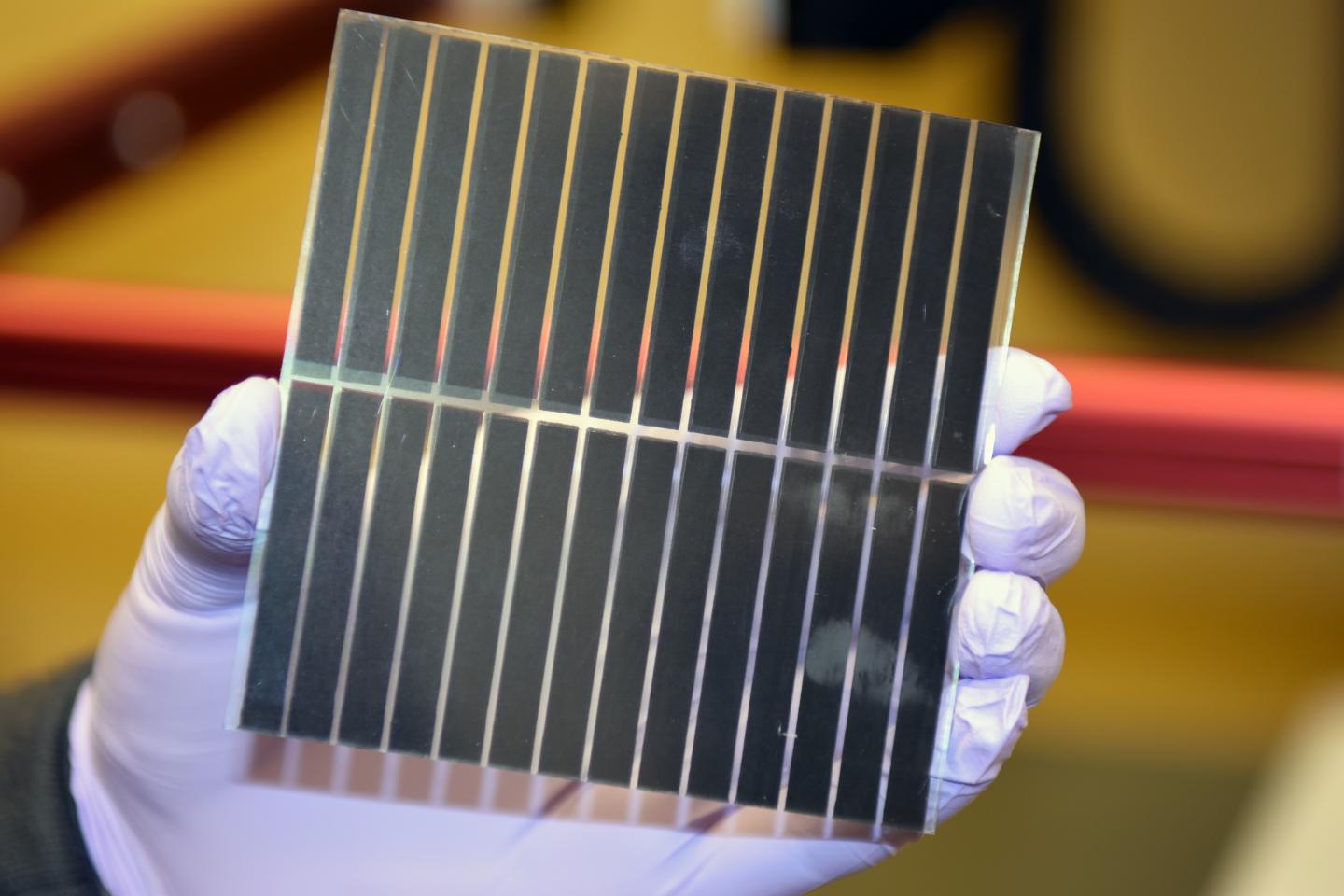24.10.23
Researchers at EPFL and Northwestern University unveil a groundbreaking design for perovskite solar cells, creating one of the most stable PSCs with a power-conversion efficiency above 25%, paving the way for future commercialization.
Perovskite solar cells (PSCs) stand at the forefront of solar energy innovation, and have drawn a lot of attention for their power-conversion efficiency and cost-effective manufacturing. But the way to commercialization of PSCs still has a hurdle to overcome: achieving both high efficiency and long-term stability, especially in challenging environmental conditions.
The solution lies in the interplay between the layers of PSCs, which has proven to be a double-edged sword. The layers can enhance the cells’ performance but also cause them to degrade too quickly for regular use in everyday life.
Now, a collaboration between the labs of Michael Grätzel at EPFL and Edward Sargent at Northwestern University, has made a significant leap in designing PSCs with record stability and power-conversion efficiency surpassing 25% addressing two of the most pressing challenges in the solar energy sector. The research is published in Nature.
The researchers focused on designing inverted PSCs, which have previously shown promise in terms of operational stability. They introduced a unique, “conformal self-assembled monolayer on textured substrates”, which describes a special, single layer of molecules that spontaneously and uniformly coats the irregular surface of a textured substrate.
The new design tackles the problem of “molecular agglomeration”, which occurs when molecules clump together instead of spreading out evenly. When this happens on the textured surfaces of solar cells, it can seriously affect their performance.
To address this, the researchers introduced a special molecule called 3-mercaptopropionic acid (3-MPA) into the solar cells’ self-assembled monolayer (SAM) formed by a molecular layer of phosphonic acids substituted by carbazole, which selectively extracts the positive charge carriers (“holes”) that are produced under illumination in the perovskite films.
However, this role is compromised by the aggregation of the PAC molecules. Adding 3-MPA enhances the contact between the perovskite material and the solar cell's textured substrate to improve performance and stability, allowing it to disassemble molecular carbazole clusters, and ensuring a more even distribution of the molecules in the self-assembled monolayer. With this addition, the molecules on the solar cell's surface spread out more uniformly, avoiding those problematic clumps and enhancing the PSC’s overall stability and efficiency.
The new design enhanced light absorption while minimizing energy losses at the interface between layers, leading to a lab-measured power-conversion efficiency of an impressive 25.3%. In terms of stability, the inverted PSCs showed remarkable resilience. The device maintained 95% of its peak performance even after being subjected to rigorous conditions of 65°C and 50% relative humidity for over 1000 hours. This level of stability, combined with such high efficiency, is unprecedented in the realm of PSCs.
This breakthrough design is a significant step forward in putting PSCs into the market; addressing both their efficiency and stability issues, combined with their lower manufacturing costs compared to current solar cells, can lead to widespread adoption. The new method can also go beyond solar cells, benefiting other optoelectronic devices that require efficient light management, such as LEDs and photodetectors.
Author: Nik Papageorgiou
Source: EPFL













